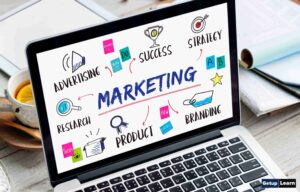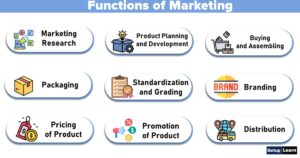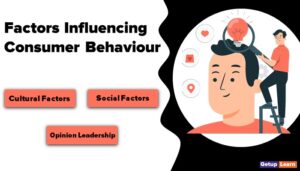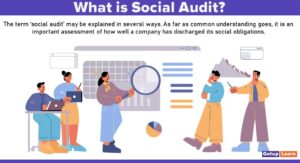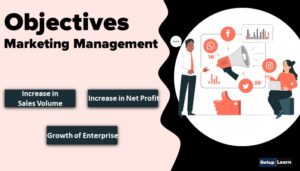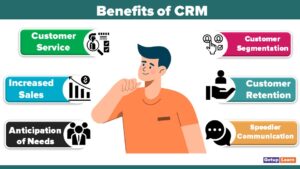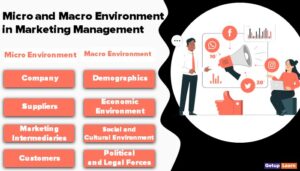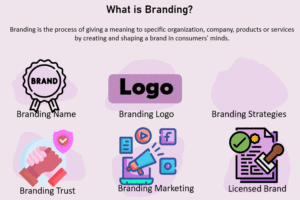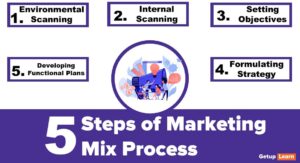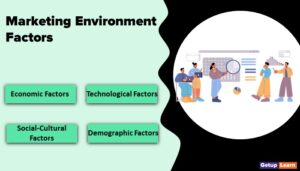Table of Contents
What is a Product?
Product is the first P in the marketing mix. Without a product a marketer has nothing, in other words, there is nothing to promote, distribute and charge for. Therefore it is considered the main axis of marketing activities.
In a general sense, a product is an offering by the marketer which has a bundle of ‘utility’. Anything which can be utilized, to get satisfaction is called a product.
A product is a complex of tangible and intangible attributes, including packaging, color, price, manufacturer’s prestige, retailer’s prestige, and manufacturer’s and retailer’s services which buyers may accept as offering the satisfaction of wants or needs. By S.W. Stanton

The term ‘product’ has been defined in a narrow as well as broad sense. In a narrow sense, it is a set of tangible physical attributes assembled in an identifiable and readily recognizable form.
In a broader sense, it recognizes each separate brand as a separate product. The product is a bundle of satisfaction that a customer buys. It represents a solution to a customer’s problem.
It is in this context that the marketing definition of a product is more than just what the manufacturer understands it to be. As Peter Drucker puts it, as long as a product is not bought and consumed, it remains a raw material.
The product is almost always a combination of tangible and intangible benefits. For example, a refrigerator is not just merely steel, plastic, frozen gas, number of doors, and so on, but also involves factors like after-sales service, delivery and installation, assistance in the purchase of the product, dealer network, and service.
Definition of Product
These are some simple definitions of product by authors:
[su_quote cite=”Theodore Levitt”]It refers to the augmented product or the aggregate of satisfactions that a user obtains.” In other words, “A product may be an idea, physical entity (goods), or a service, or any combination of the three. It exists for the purpose of exchange for the satisfaction of individual and organizational objectives.[/su_quote]
[su_quote cite=”W. Alderson”]Product is a bundle of utilities consisting of various product features and accompanying services”. It consists of those physical and psychological satisfactions that the buyer receives when he buys the product, which the seller provides by selling a particular combination of product features and associated services.[/su_quote]
[su_quote cite=”Philp Kotler”]A product is anything that can be offered in a market for attention, acquisition, use, or consumption that might satisfy a want or need. Thus a product can be evaluated from the buyer’s and seller’s perspectives. To a buyer, it means satisfaction of want and to a seller, it means fulfillment of commercial need in the form of sales and profit.[/su_quote]
A product can be either in the form of goods, services, or ideas. Products can seek both tangible and intangible benefits to consumers. Tangibility includes the physical component of a product which can be seen and touched whereas intangible components include the benefits which cannot be touched or seen but rather can be felt. Goods come under the physical entity which is purely tangible.
For Example, Books, Chairs, etc. Service components are intangible in nature. For example, Tourism, Travel agencies, Hospitality, and ideas are the concepts or philosophies which are saleable in the market. For example, Career guidance by consultancy firms.
Difference between Goods and Services
A service is any act or performance that one party can offer to another that is essentially intangible and does not result in the ownership of anything. Its production may or may not be tied to a physical product.
Four attributes generally distinguish services from goods: intangibility, perishability, inseparability from the service provider, and variability in quality. Their impact is greatest for personal services which are usually more intangible, more perishable, more dependent on the skills of the service provider (inseparability), and have more quality variations than rented – or owned – goods services.
Following are the basic difference between goods and services:
- Because goods are physical things, they can be seen and touched. A good is a tangible item. When you buy it, you own it. And it’s usually pretty easy to see exactly what you’ll get. Services are intangible. You can’t “hold” a service. And it may be hard to know exactly what you’ll get when you buy it.
- Goods can be stored. Surpluses in one period can be applied against shortages in another period. Service, on the other hand, is a deed performed by one party for another. When you provide a customer with a service, the customer can’t “keep” it. Rather, it’s experienced, used, or consumed.
- Services are frequently inseparable. The quality of many services cannot be separated from the service provider. Goods can be manufactured by one firm and marketed by another. The quality of a good can be differentiated from a distribution intermediary’s quality.
- Goods are usually produced in a factory – and then sold. By contrast, services are often sold first and then produced. And they’re produced and consumed in the same time frame. Further, goods producers may be far away from the customer, but the service provider often works in the customer’s presence.
- Services may vary in quality over time. It is difficult to standardize some services because of their labor intensiveness and the involvement of the service user in diagnosing his service needs. Goods can be standardized. Mass production and quality control can be used. It’s also hard to have economies of scale when the product is mainly a service. Services can’t be produced in large.
Generally, services have four characteristics that distinguish them from goods:
-
Intangibility: This means that they often cannot be displayed, transported, stored, packaged or inspected before buying. This occurs for repair services and personal services.
-
Perishability: This means that they cannot be stored for future sales.
-
Inseparability: This means that the service provider and the services he is providing are sometimes inseparable. When this occurs, the service provider is virtually indispensable and customer contact is often considered an integral part of the service experience.
- Variability: Means differing service performance from one purchase experience to another, often occurring even if services are completed by the same person.
The impact of these characteristics is greatest for personal services. They are usually much more intangible, more perishable ad more inseparable from the service provider.
Level of Product
Products can be oriented on different levels. Each level represents different benefits, which creates a product identity. Following are the level of products by Kotler:
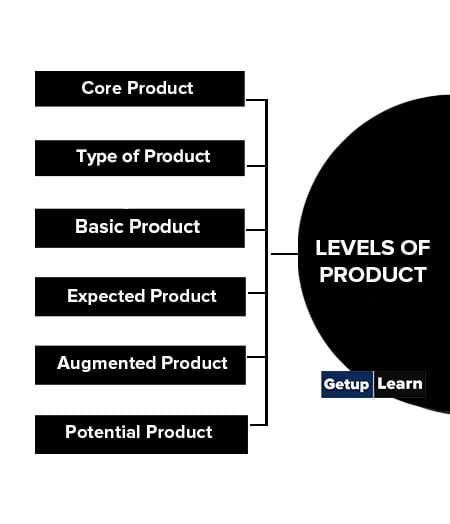
Core Product
It is the bundle of tangible and intangible features offered in the marketplace. It represents the benefits expected by the consumer when he wants to buy the product. When a consumer buys a car he is not merely buying a journey agent.
He is buying something that will give him a feeling of a comfortable and luxurious Journey. Core benefits create the basic level of the product.
Type of Product
It is built around the core product and offers consumers something more than the physical product or service. It covers consumers’ minimum expectations from the product and includes factors such as color, packaging, quality, design, brand name, style, etc.
Basic Product
Here the core benefits offered by a product at the first level are summated with offerings to transform it into the basic product. Thus a basic product is the core satisfaction of customers’ wants with certain minimum offerings. For example, A hotel or restaurant may include chairs, tables, washroom, etc.
Expected Product
An expected product carries certain minimum expectations for customers while purchasing a product. Thus, while consuming food in a hotel a customer expects tasty and hygienic food, a clean environment, etc.
Augmented Product
If a product’s feature exceeds the minimum level of expectation of the customer, it becomes an augmented product. An augmented product has ‘differentiation’ in terms of its offerings which tends to exceed customer expectations.
It consists of value added to a product by advertising, the reputation of the manufacturer, financing, and delivery arrangement guarantees, warranties, after-sales services, customer complaint management system, replacement or return policy, customer education and training, or other benefits offered to the consumer by the seller.
For example, hotels and restaurants in addition to tasty and hygienic food may provide fast service, quick response, and variety in foodstuff. All these offerings add more value to the core product in terms of reliability.
Potential Product
These are the prospects that a marketer can incorporate into a product to enhance customer loyalty and belief. This can be done by integrating new ideas and methods to improve performance and efficiency.
The potential product helps in retaining existing customers and attracting new customers through goodwill. For example, customers after taking food in a hotel or restaurant are offered free soft drinks at the same cost.
Types of Products
Following are the two types of products;

Consumer Products
Consumer products are those which are used by ultimate consumers or households and in such form that they can be used without further commercial processing.
Following are the types of consumer products:
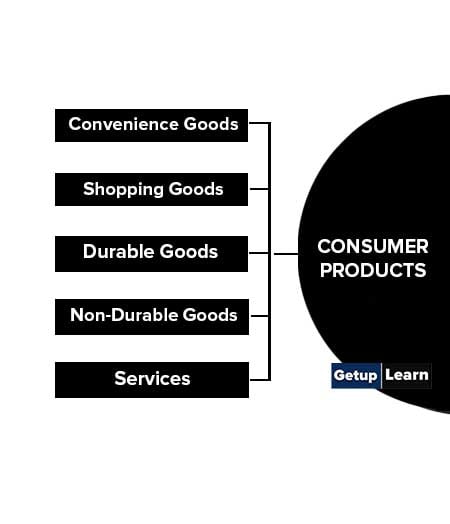
Convenience Goods
These are goods that consumers generally purchase frequently without making an effort or as a habit. The purchase is almost spontaneous and the person has already a predetermined brand in mind. These convenience goods include soaps, newspapers, kinds of toothpaste, toiletries, cigarettes, etc. Often convenience goods are bought impulsively or spontaneously.
For example, when a person goes shopping around and sees a product that attracts his eyes, he buys it on impulse. Such goods are not purchased on regular basis.
Shopping Goods
These are goods that are purchased after going around shops and comparing the different alternatives offered by different manufacturers and retailers. In this case, emphasis on quality, price, fashion, style, etc. are of great importance.
A common example, in the Indian context, would be the purchase of sarees by ladies. Generally, ladies go looking around from shop to shop before they make their final selection. Hence, the expression ‘shopping’ goods.
These also include durables such as furniture and refrigerators. That is why a large variety of goods offered at a retail outlet increases sales of this type of goods. A manufacturer should also attempt to have his product properly displayed and offered at most retail outlets.
Durable Goods
These are goods that are ‘durable’ or that last for some time. Examples of such goods would be electric irons, refrigerators, television sets, etc. This type of product requires more selling effort from the salesman. The question of after-sales service and repairs is also of importance as ‘selling points’ or ‘benefits’ that the customer would like to have.
Therefore, in the case of refrigerators, the number of years of guarantee, particularly for the compressor, is an important consideration when a consumer makes his final selection. In the case of certain types of durables, after-sales service is very essential.
If a customer purchases a cyclostyling machine or duplicating machine, it is necessary for the salesman to ‘follow through and visit the customer to see how it is installed and used. Very often this product is operated by ‘peons’ who may not know how to do so.
This results in poor duplication and copies look unattractive and the consumer gets the impression that the fault lies with the machine. So, while marketing such a product, it is important to guide the actual user of the machine.
Non-Durable Goods
These are goods that get depleted on consumption. For example, a bottle of soft drink is consumed at once on one occasion within a matter of minutes. Soap obviously takes a little longer. However, in both these cases, the goods are consumed very fast.
The advantage of these goods is that they are purchased very often and therefore there are many repeat purchases once the customer is satisfied with one product.
Therefore, one must ensure the quality and appropriateness of the price. These are the products that have to be advertised heavily, with a view to inducing people to try them out, and thus, build up brand preference and brand loyalty.
Services
Services are different than tangible objects. Intangibility, variability, inseparability, perishability, etc., are the main features of services. Services make our life safe and comfortable. Trust, reliability, costs, regularity, and timing are important issues.
The police, the post office, the hospital, the banks and insurance companies, the cinema, the utility services by local bodies, the transportation facilities, and other helpers (like barber, cobbler, doctor, mechanic, etc.,) can be included in services.
All marketing fundamentals are equally applicable to services. ‘Marketing of services’ is the emerging facet of modern marketing.
Industrial Products
Industrial products are used by industrial consumers for the satisfaction of their organizational needs. Industrial products are purchased for manufacturing producing another product of organizational concern. On the basis of their characteristics and usages.
Following are the types of industrial products:
- Raw Materials
- Component Parts
- Process Material
- Capital Equipment
- Accessory Equipment
- Consumable Supplies

Raw Materials
These are essential prerequisites in the process of production. Raw materials form the core of the product and are identified in the finished goods. For example, In the manufacturing of sugar, sugarcane is the primary raw material used.
Component Parts
Components are the elements of a finished product, which are further assembled to form a complete finished product. These are the fundamental component of a total product without which, the desired finished product can’t be obtained.
For example, in order to manufacture a bike, it is essential to assemble components like carburetor, engine, lights, wheel, body parts, minor, etc.
Process Material
Process materials are substances that are used directly in the manufacturing process, but are not easily identifiable in the final product. For example, in the manufacturing process of perfume, alcohol is used, which cannot be easily identified.
Capital Equipment
They are the supportive components in the process of production. They are not directly incorporated into the final product but are very much necessary for the production of finished goods.
For example, various tools, machines, material handling equipment, etc. Purchase decisions in regards to these types of products usually involve much time, because these items are expensive and involve long-term use. The buyer of capital equipment expects regular services and maintenance for the same.
Accessory Equipment
These are also supportive products in the production process or office activities. They are not directly incorporated into the final product but are indeed essential in the production process. These are less expensive items, frequently purchased with fewer service requirements in comparison to capital equipment.
For example, computers, calculators, furniture, etc.
Consumable Supplies
These are the supportive components in the production process. They are not directly incorporated into the final product but are consumed in the production process and delivery of the product.
For example, Pen, Pencil, Paper, Electricity, and water. These are inexpensive items brought on a routine basis from more than one seller, for the smooth functioning of the production process.
How do you define product?
Product is a bundle of utilities consisting of various product features and accompanying services”. It consists of those physical and psychological satisfactions that the buyer receives when he buys the product, which the seller provides by selling a particular combination of product features and associated services. By W. Alderson
What is a product in marketing?
In a general sense, a product is an offering by the marketer which has a bundle of ‘utility’. Anything which can be utilized, to get satisfaction is called a product.
What are the levels of product?
These are the levels of product:
1. Core Product
2. Type of Product
3. Basic Product
4. Expected Product
5. Augmented Product
6. Potential Product.
What are the types of products?
Types of products can be divided into two types:
1. Consumer Products: 1. Convenience Goods, 2. Shopping Goods, 3. Durable Goods, 4. Non-Durable Goods, 5. Services, etc.
2. Industrial Products: 1. Raw Materials, 2. Component Parts, 3. Process Material, 4. Capital Equipment, 5. Accessory Equipment, 6. Consumable Supplies, etc.
What are the types of consumer products?
Types of consumer products are:
1. Convenience Goods
2. Shopping Goods
3. Durable Goods
4. Non-Durable Goods
5. Services.
What are the types of Industrial Products?
Types of industrial products are:
1. Raw Materials
2. Component Parts
3. Process Material
4. Capital Equipment
5. Accessory Equipment
6. Consumable Supplies.

